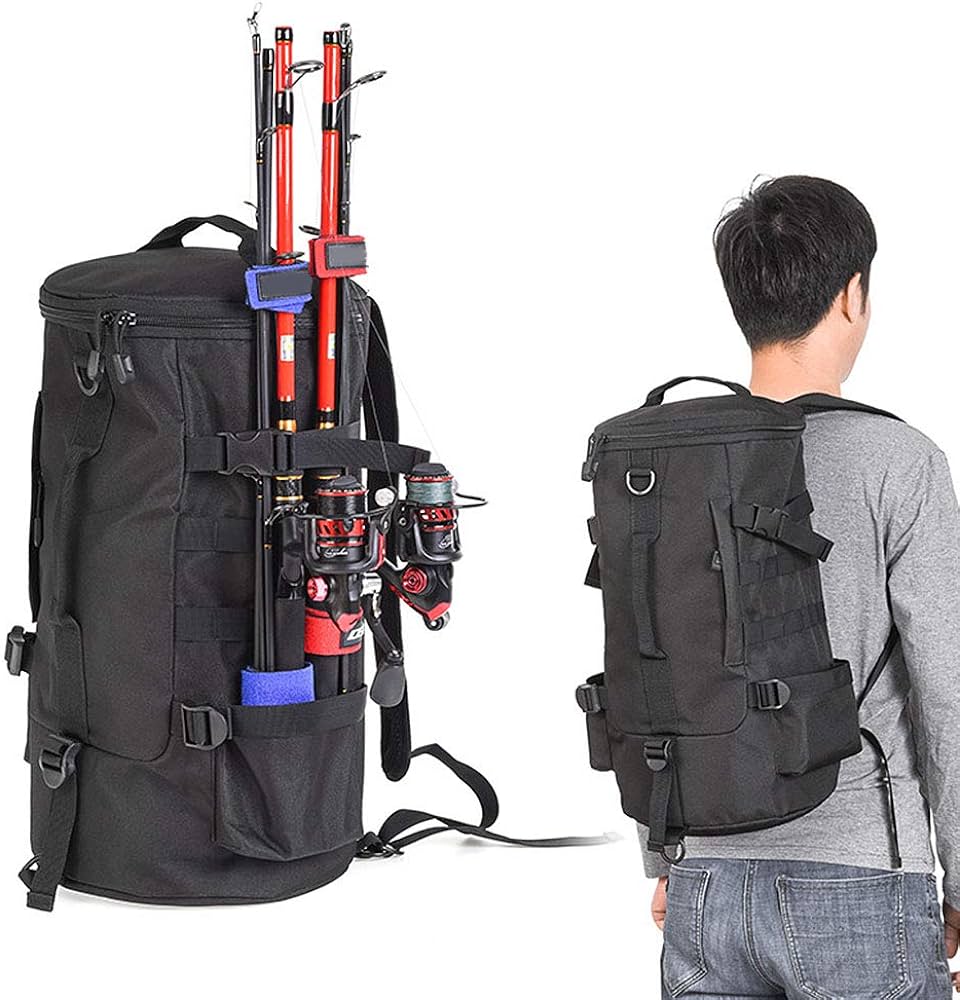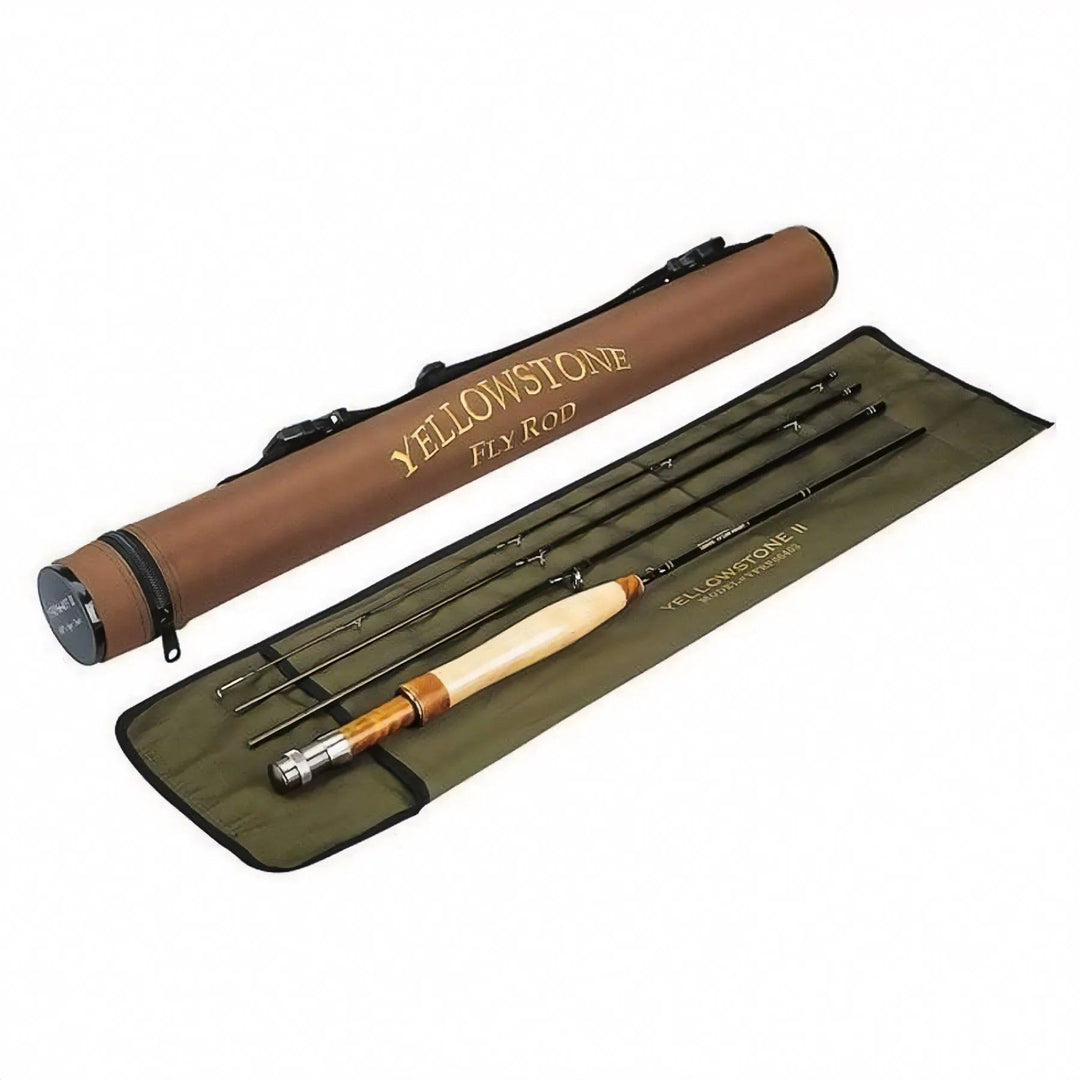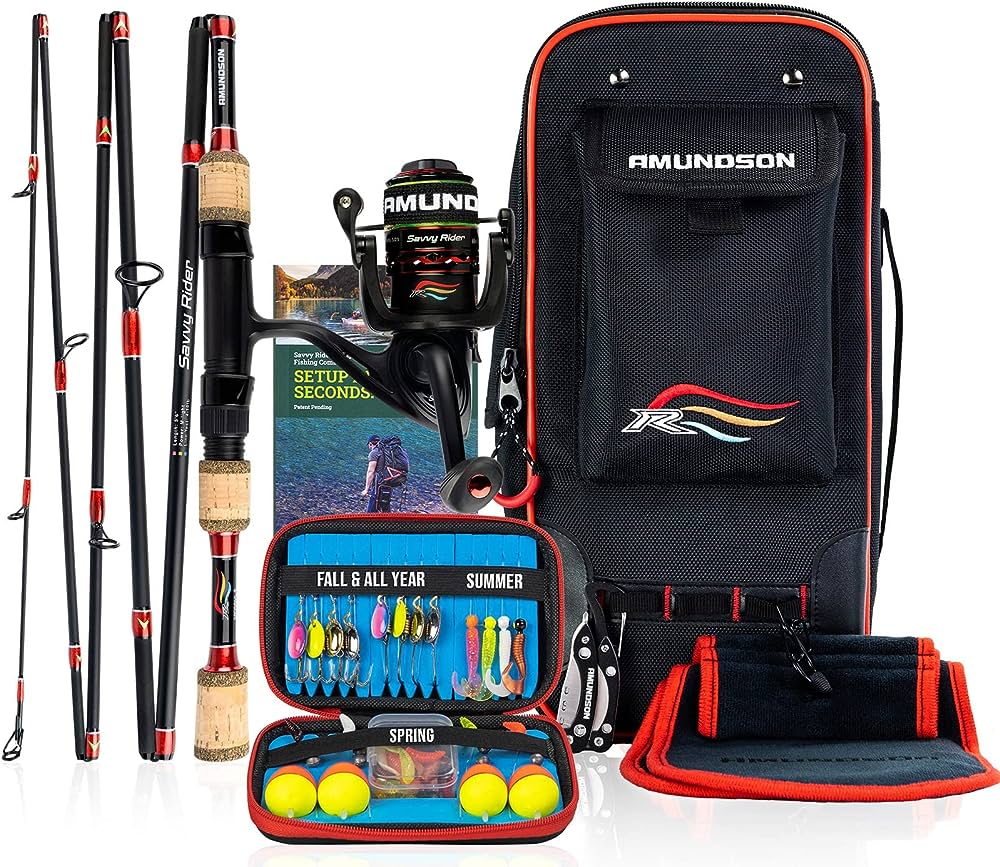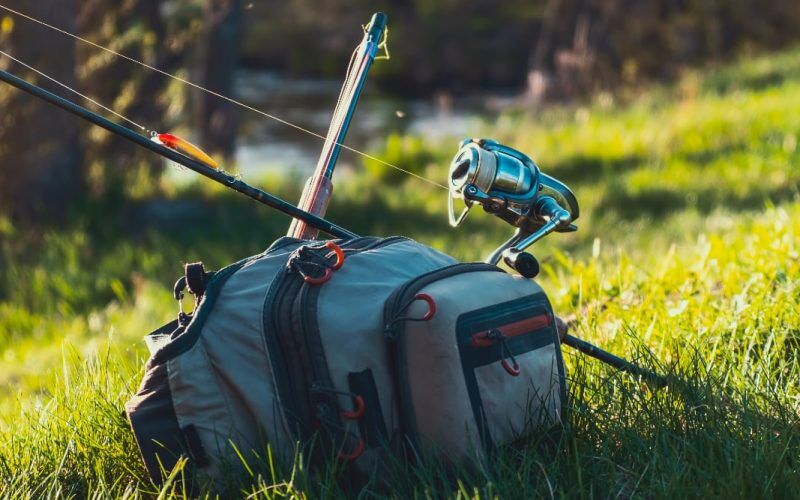Introduction
For the adventure-loving angler, a backpacking fishing rod is a cherished companion. It combines the thrill of fishing with the love of hiking and exploring the great outdoors. This guide delves into what makes the perfect backpacking fishing rod, from portability to durability, offering insights to help you choose the best fit for your wilderness expeditions.
The Essence of Backpacking Fishing Rods
Why Choose a Backpacking Fishing Rod?
Backpacking fishing rods cater to anglers on the move. They are lightweight, compact, and easy to carry. These rods ensure you don’t miss a fishing opportunity during your travels.
Characteristics of the Ideal Rod
The perfect backpacking fishing rod is durable, versatile, and portable. It needs to withstand the rigors of travel and adapt to various fishing environments.
Types of Backpacking Fishing Rods
Telescopic Rods
Telescopic rods are popular among backpackers. They collapse to a fraction of their full size, making them easy to pack and transport.
Breakdown Rods
Breakdown rods, which disassemble into several pieces, are another option. They offer a balance of compactness and feel, more akin to traditional fishing rods.
Selecting Your Backpacking Fishing Rod
Material Matters
The material of your rod influences its weight, sensitivity, and durability. Graphite, fiberglass, and composite rods each have their benefits and trade-offs.
Length and Weight
Consider the rod’s length and weight. Shorter, lighter rods are easier to pack but may limit casting distance and fish size.
Care and Maintenance
Maintenance Tips
Proper care extends your rod’s life. Regular cleaning, careful assembly, and storage in a protective case are crucial.
Dealing with Breakages and Repairs
Learn basic repair techniques. Carry a small repair kit to address issues quickly on your adventure.
Why Choose a Backpacking Fishing Rod?
Combining hiking and fishing enriches the outdoor experience, offering a dual allure of adventure and tranquility. The quintessential backpacking fishing rod embodies this spirit of exploration, providing anglers the freedom to enjoy their sport without the burden of traditional, bulky equipment. Imagining the scenario of stumbling upon a hidden lake or a secluded river bend during a hike illuminates the essence of having a rod that is readily accessible, lightweight, and capable of capturing the moment’s potential.
Selecting a backpacking fishing rod is not merely about convenience; it’s about embracing the essence of angling in its most adventurous form. It’s for those who view every body of water as a potential fishing haven and believe that part of fishing’s joy involves the journey to uncharted waters. Whether navigating steep trails, dense forests, or rocky paths, the ideal rod remains an unobtrusive travel companion, ready at a moment’s notice to bring the wilderness’s silent waters to life.
Choosing the Perfect Backpacking Fishing Rod: A Comprehensive Guide
The allure of a pristine mountain lake or a secluded stream, teeming with fish, is a powerful draw for many backpackers. Adding angling to your backcountry adventure requires careful gear selection, and none is more crucial than your fishing rod. Backpacking fishing rods prioritize portability and packability without compromising performance. Let’s delve into the key factors to consider when choosing the perfect backpacking fishing rod for your next outdoor excursion.
Rod Length and Packability: Striking the Right Balance
Traditional fishing rods, often exceeding 6 feet in length, pose a significant challenge for backpackers navigating rugged terrain and tight spaces. Backpacking rods address this issue with innovative designs that prioritize packability. Telescopic rods collapse down to a compact size, making them ideal for stowing in a backpack or attaching externally. Multi-piece rods, which break down into several sections, offer similar portability while maintaining a more traditional feel.
Choosing the right length depends on your fishing environment and target species. Shorter rods, typically under 6 feet, excel in tight quarters and small streams, providing precise casting and better maneuverability. Longer rods, often extending beyond 7 feet, offer greater casting distance and leverage for battling larger fish, making them suitable for open water and larger species.
Material Matters: Graphite vs. Fiberglass
Backpacking fishing rods primarily utilize two materials: graphite and fiberglass. Each material presents unique advantages and disadvantages. Graphite rods are renowned for their sensitivity and lightweight construction. They transmit even the slightest nibble, allowing for quicker reaction times and improved hook sets. However, graphite’s sensitivity comes at the cost of durability, making it susceptible to damage from impacts or mishandling.
Fiberglass rods, on the other hand, are celebrated for their durability and affordability. They can withstand rough handling and accidental drops, making them suitable for rugged backcountry environments. However, fiberglass rods tend to be heavier and less sensitive than their graphite counterparts, potentially impacting casting accuracy and strike detection.
Action and Power: Tailoring to Your Target
A rod’s action refers to its bending curve under pressure, dictating casting performance and fish-fighting capabilities. Fast action rods bend primarily near the tip, providing greater casting accuracy and sensitivity for finesse techniques. Slow action rods bend throughout their entire length, offering a more parabolic curve for increased power and shock absorption when battling larger fish. Moderate action rods fall between these two extremes, providing a balance of casting and fish-fighting capabilities.
Rod power signifies the rod’s strength and its suitability for different line weights and lure sizes. Lighter power rods excel with finesse techniques and smaller fish, while heavier power rods provide the backbone needed to subdue larger, more powerful species.
Additional Considerations: Reel Seats, Guides, and Handles
While the rod blank forms the foundation of your fishing tool, several additional components influence your overall fishing experience. Reel seats secure your reel to the rod, providing a stable platform for casting and retrieving. Look for reel seats with secure locking mechanisms and comfortable ergonomics.
Guides, the small rings lining the rod blank, facilitate line movement and reduce friction during casts and retrieves. High-quality guides, often made from ceramic or other durable materials, minimize line wear and improve casting distance.
Handles, typically constructed from cork or EVA foam, provide grip and comfort during extended fishing sessions. Cork handles offer a classic aesthetic and excellent grip, while EVA foam handles are more durable and easier to clean.
Ultimately, the perfect backpacking fishing rod is a personalized choice, tailored to your fishing style, target species, and backcountry needs. By carefully considering the factors outlined above, you can select a rod that balances packability, performance, and durability, ensuring that your next backcountry fishing adventure is a resounding success.
Conclusion
A backpacking fishing rod brings the joy of fishing into the wild. Its selection requires careful consideration of your needs and the conditions you’ll face. With the right rod, your backpacking trip can include unforgettable moments of angling in pristine, remote waters.
